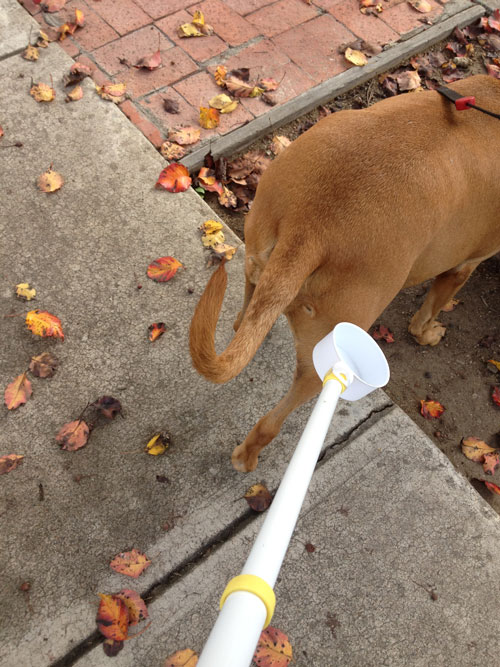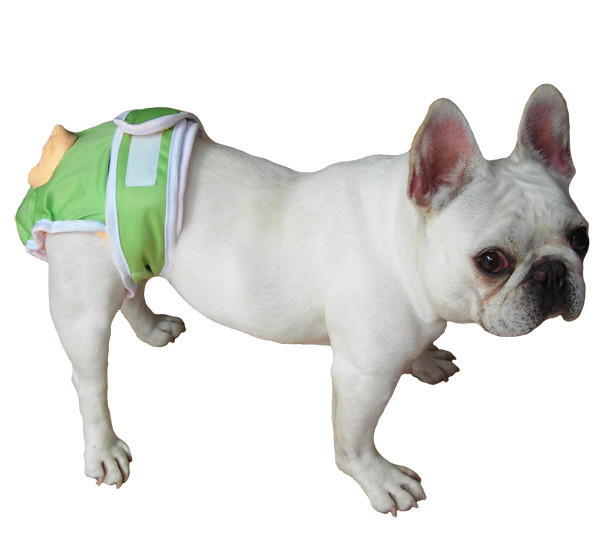COLLECTING A URINE SAMPLE:
The sample should be as fresh as possible as changes can occur if it is allowed to stand.
In an ideal world, it is preferable for you to obtain a sample jar from your vet into which put the urine sample. However, any container can be used to collect a sample so long as it is absolutely clean and dry. Confusion could easily result if for example traces of sugar were present in a bottle or jar. This may lead to the mistaken finding of glucose in the urine (a symptom of diabetes). The bottle should be washed in hot detergent, rinsed repeatedly and then allowed to dry before it is used for urine.
Do not collect the very first urination of the day as this will be a very strong sample and if possible try to obtain a “mid-stream” sample from your dog, ie not the very beginning or end of the urine flow.
As a rule, male dogs are easier to collect from than females.
You can purchase specific tools to help you collect a sample such as this one from www.petzhealth.com

“tool” courtesy of www.petzhealth.com
If you do not wish to purchase a special tool for the job, you may be able to slide a margarine tub or shallow cake tin under your dog during urination. You might also try taping a wide-neck container or a plastic bag (without holes in it) to something like a badminton racket or a child’s fishing net. The extra length of the handle can help you pass the container under the bitch while she squats or into the dog’s urine stream without getting too close and disturbing them – obviously, this container must also be sterile so as not to contaminate the sample.
Many dog’s are put off when you try to put something under them as, to be fair, this is unusual behaviour for you and frankly a bit odd! If they are put off, then they won’t pee for you. If this is the case for your dog, a good idea is to spend a little time, several times in the day you are wanting to take a sample, and just put the container under them in the house. So, while sitting next to your dog as he is standing, take your jug or whatever you are intending to use and slip it under him, then take it away really quickly and treat him. If your dog is clicker trained, this is a very good tool to use to mark the fact that when he stands still with the container under him, he is being a good boy. If you treat each time he will very soon understand that a container under him brings tasty rewards and the fear will leave him very quickly. After doing this several times, when you come to slip it under him in the garden when you are taking a sample you will find life soooooooooooooooooo much easier (speaking from experience!!!).
If you MUST store the sample, enclose it completely in 2 plastic bags which are tied and sealed, and keep in the fridge, preferably in an air tight container.
EXTRA TIT-BIT OF INFO
You can try treating the infection at home, but if your dog doesn’t respond to the treatment or begins straining to urinate, you’ll want to get her to a vet immediately. The infection can travel to her kidneys and cause a serious illness if it is not treated. Your vet will likely prescribe an antibiotic to treat the infection. If you do decide to try a home treatment if the symptoms seem very mild, then just like cranberry juice can help a person with a urinary tract infection, it can help a dog with this condition too. Both Cranberry juice and Apple Cider Vinegar are reported to make the urine more acidic and create an inhospitable environment for bacteria. Generally, urine infections lead to a more alkaline urine pH so using the acidic ACV or Cranberry will balance it more and increase the pH. It will likely be difficult to convince your dog to drink cranberry juice, but you can add an extract capsule to his food, about 20mg per pound of body weight and perhaps a drop in their dinner or water.
Cantharis
Cantharis is a homeopathic remedy made from the Spanish fly and used for treating urinary tract disorders. It is said to provide comfort from the pain and burning that accompanies such conditions. The cantharis pellets can be given to the dog inside peanut butter or another treat to encourage him to swallow them.”
.

